Halifax is the capital and largest city in Nova Scotia. It owes its existence largely to the navy who found its large, deep, ice-free harbor, convenient. Today its harbor is often filled with huge cruise ships and its waterfront is one of the most visited attractions in Nova Scotia.
If you’re a polite urban boondocker (meaning you don’t throw down your rug, drag out your chairs, and fire up your BBQ), you can quietly stay overnight in several parking lots near the cruise ship docks. This type of boondocking is a bit don’t-ask-don’t-tell, so please enjoy, but don’t ruin it for future travelers!
Despite it being Nova Scotia’s largest city, from the waterfront, most of the attractions you’ll want to experience are easily within walking distance.
But first, we pulled over for this gigantic roadside attraction – a Cow Bay concrete moose….just because.
Halifax Citadel National Historic Site and Old Town Clock
Although the city has some modern touches, the Halifax Citadel still seems to dominate it. Built in 1856, it sits hilltop, keeping watch over the city’s downtown. This 19th century British fort not only has some of the best views of the city (picture at the top of this blog post and below) but, it is also a history museum and they fire off a cannon daily.
To reach it, you’ll likely walk uphill past Halifax’s iconic Old Town Clock, which Prince Edward commissioned in 1803 to ensure punctuality!
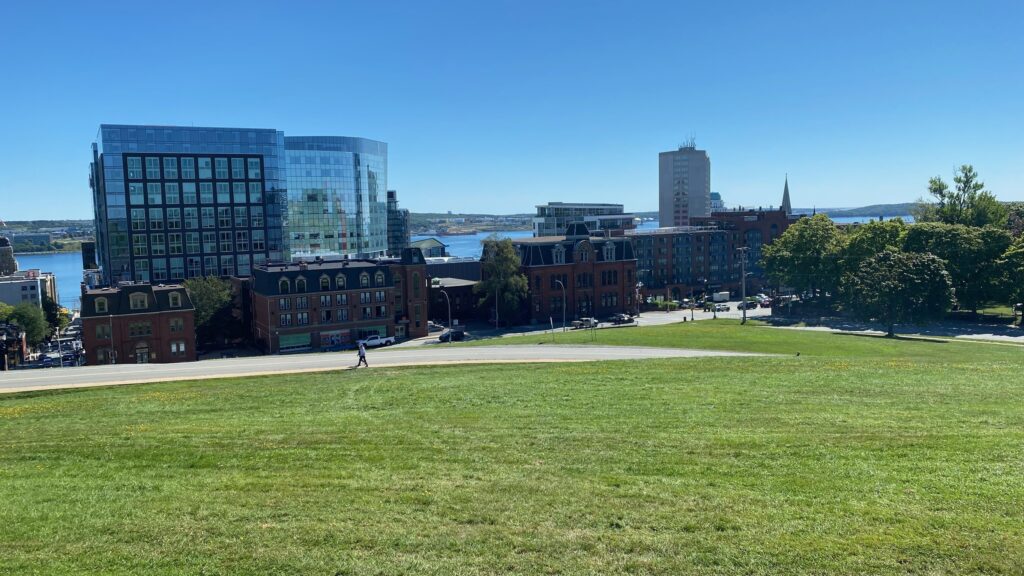
A Citadel view
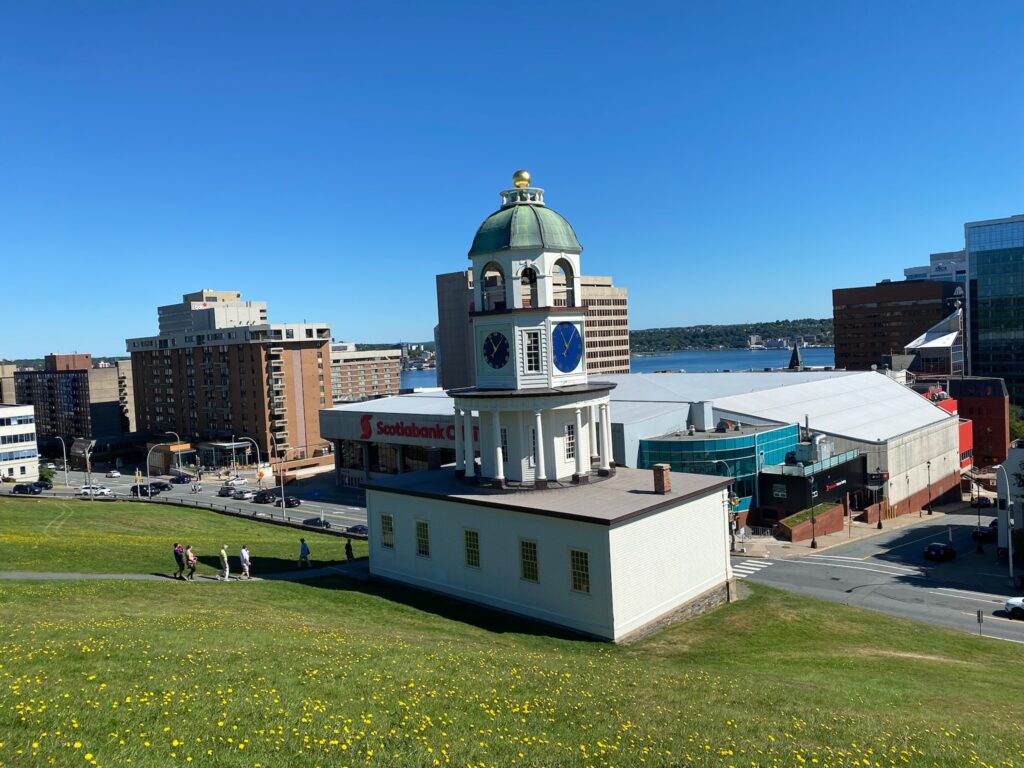
Old Town Clock 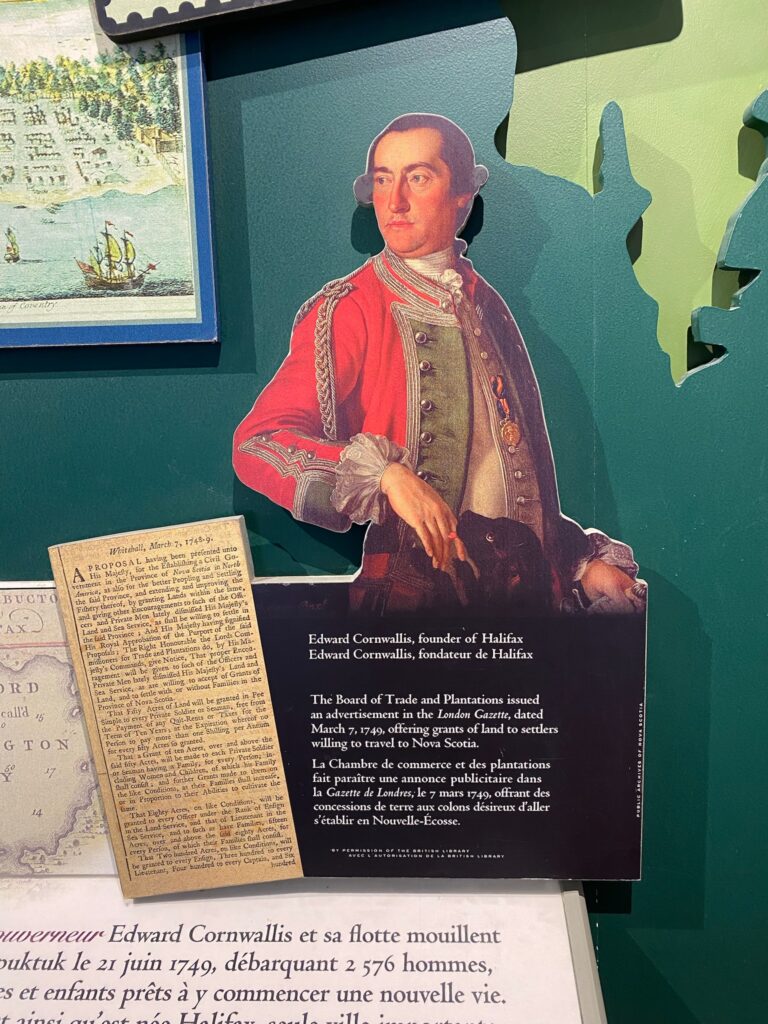
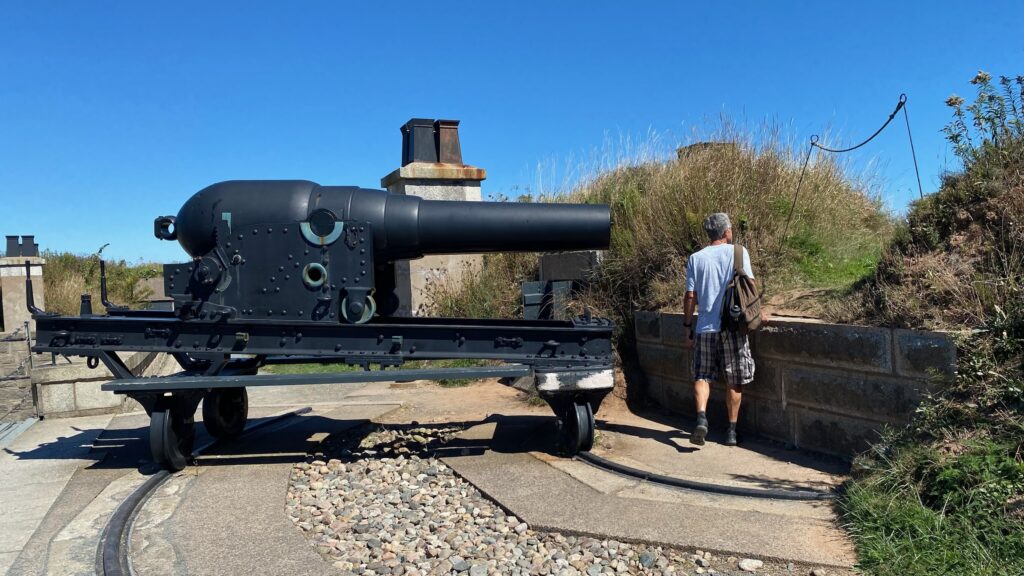
Halifax Boardwalk
Many remaining 19th century structures stretch out along the Halifax Boardwalk. One in particular was used to receive more than a million European immigrants who arrived between 1928 and 1971. Today, the buildings have been reimagined and they house art studios, outdoor cafes, and quaint shops filled with bustling pedestrians. There are also museums in this area, boat and wind jammer tours, and the HMCS Sackville (a WWII naval warship that can be toured). Hand-in-hand, there’s plenty to see and do along this route.
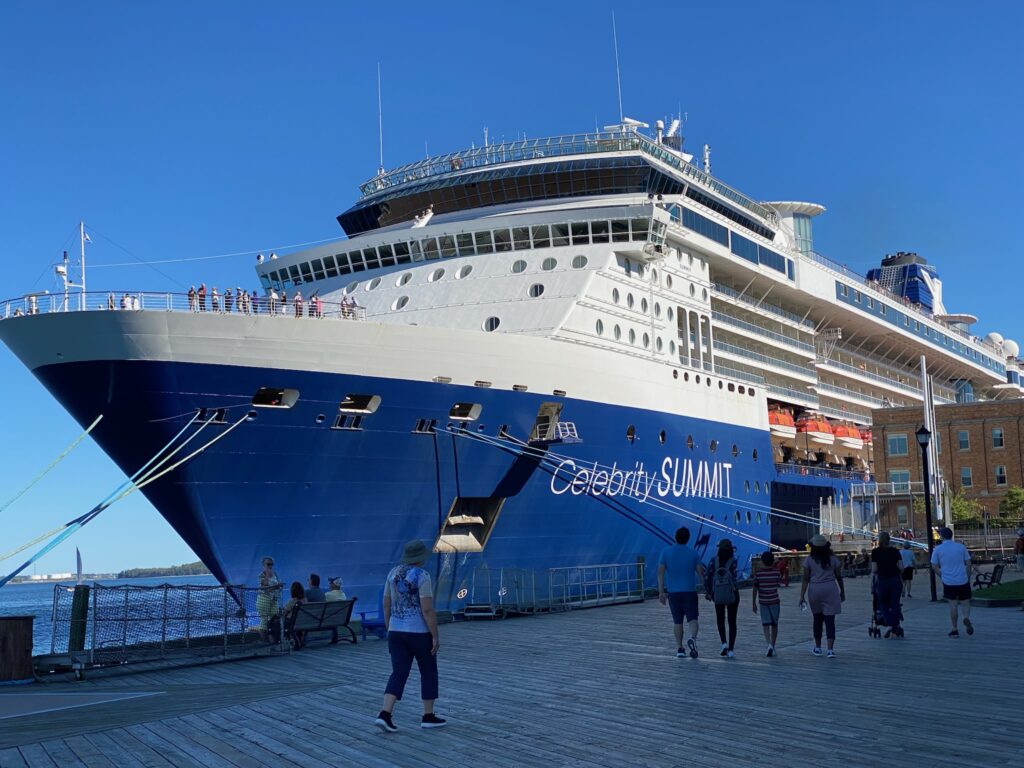
Cruise Ship 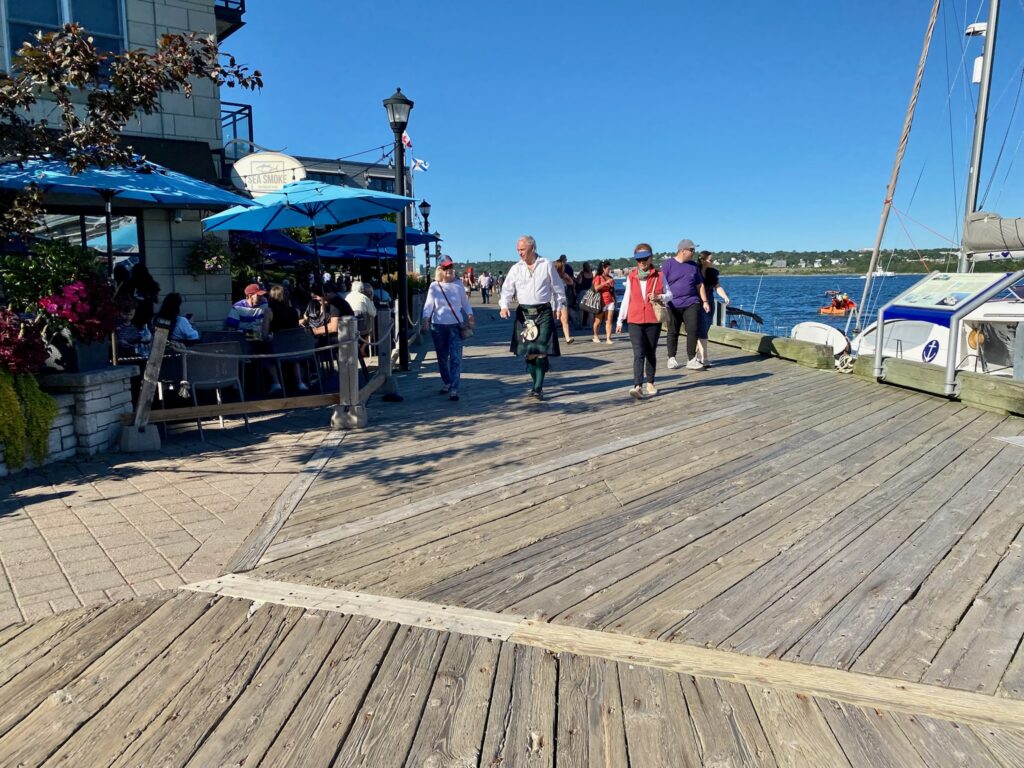
Boardwalk 
Maritime Museum of the Atlantic
As we’ve already mentioned, the Halifax harbor has played an important role in immigration to Canada and the military but, there’s a lot more to learn about the area’s history and this Maritime Museum is the place to do it. This was our favorite experience in Halifax.
The exhibits devoted to ship building and sea life, are in and of themselves, very impressive but, there are several other big draws to this museum including tales of mutiny, gales, and pirates. One is the story of the ship Saladin that was carrying vast quantities of silver bars and gold coins. A smuggler on the ship convinced half the crew to throw the captain, officers, and many of the crew overboard. They proceeded to sail off coarse and ran ashore in Nova Scotia but, ongoing searches, including a high tech survey in 1996, have failed to locate its remains.
An August gale in 1873 sank 54 vessels in one night. Another series in August of 1926 and 1927 killed 138 Nova Scotia fisherman. Lesson here? Avoid sailing the area in August?
Lastly, tales of pirates, the quest to recover sunken treasure, and plenty of doubloon are on display. I’d like to refer to my coins going forward as doubloon because it’s just fun to say. Doubloon!
Since Halifax was the closest port to the sinking Titanic, many of the survivors, as well as many of the deceased, were transported to Halifax. The Titanic story is well known but the Maritime Museum’s timeline, its focus on the rescue efforts, some actual recovered artifacts, and individual stories from the disaster were well done. I would guess that much of what we know today about the fate of the people on the Titanic is due to the detailed documentation and cataloging done by Halifax. Their proximity to the sinking ship meant that Halifax rescuers reached the area first but, it also means that Halifax has the world’s largest group of Titanic graves.
Something I didn’t realize was despite the myth of “women and children first”, the survival rate of first class men was higher than that of third class children. With new technology researchers are still learning about this disaster. In fact, for almost 100 years the identify of a deceased “unknown child” remained a mystery until 2010, when a team under Dr. Ryan Parr and Alan Ruffman concluded that these tiny child’s shoes belonged to 19 month old Sydney Leslie Goodwin. He was the youngest in a family of 8, who all perished and the only Goodwin family body that was recovered.
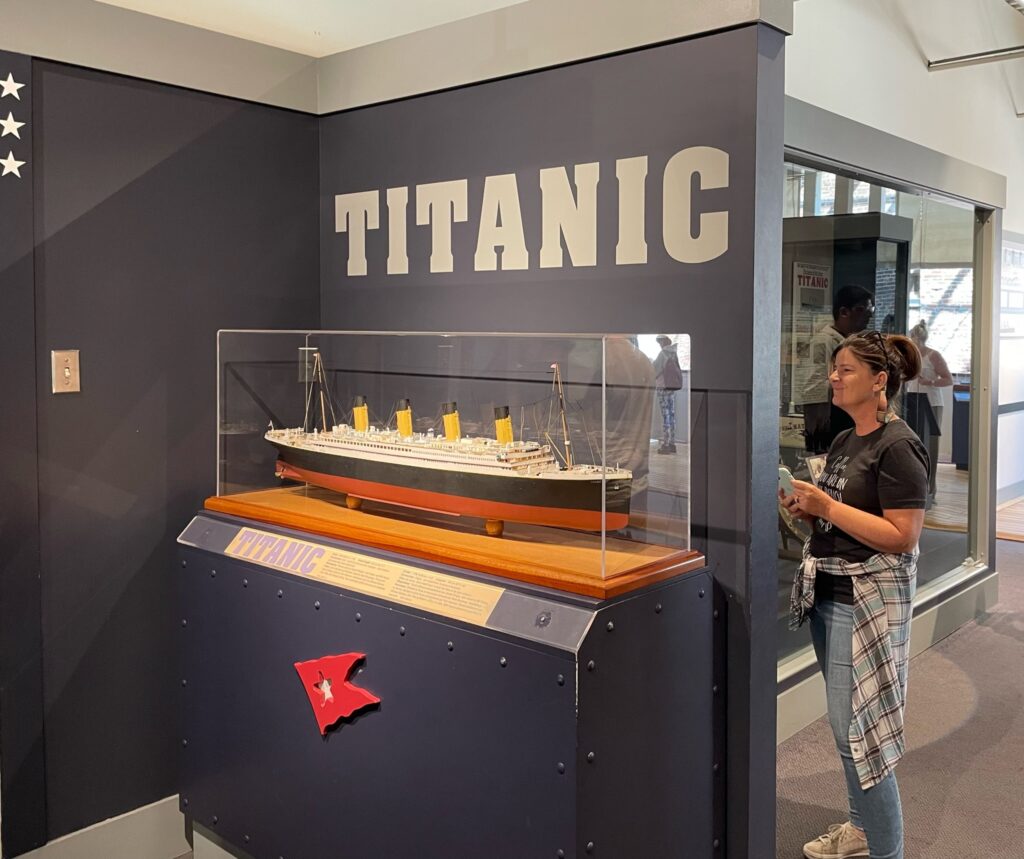

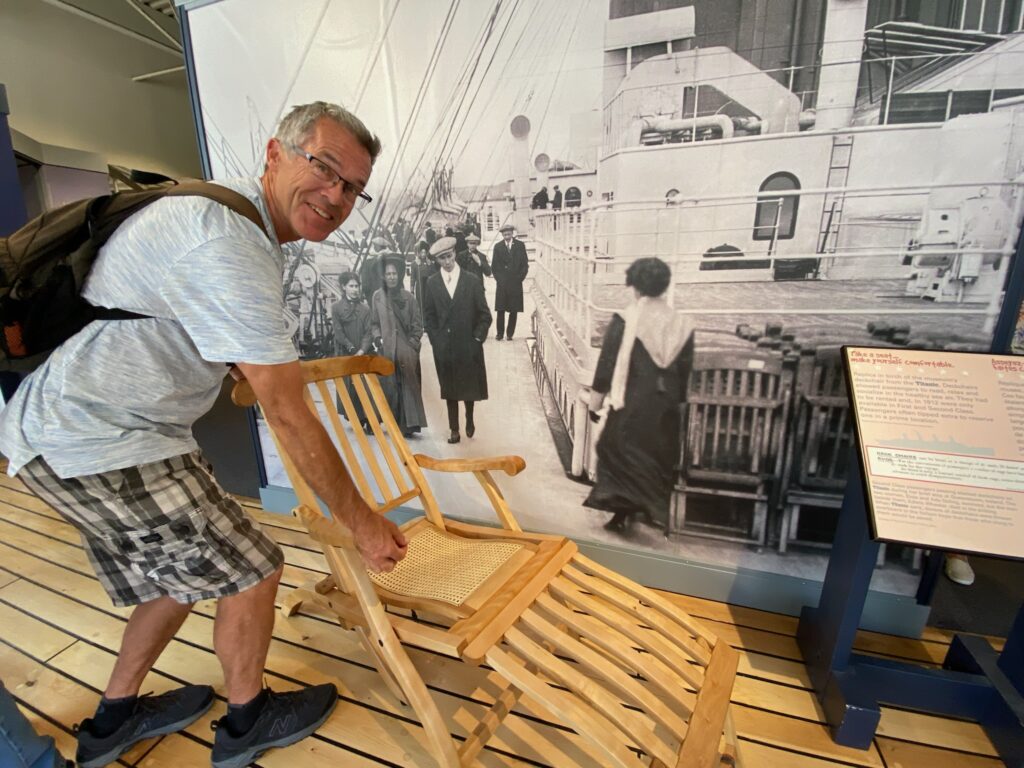
Titanic Deck Chair
Lastly, Halifax was the site of the largest man-made explosion, prior to the atomic bomb. On December 6, 1917, a French ship (the SS Mont-Blanc) that was carrying explosives collided with a Norwegian vessel in Halifax’s tight shipping lane. The SS Mont-Blanc caught fire and then exploded. The massive explosion (which flung part of a 1000 lb anchor more than 2 miles away), the subsequent tidal wave, and the ensuing fires killed over 1,600 people instantly, injured more than 9,000, and destroyed much of the town. The scale of the disaster, not only led to a national outpouring of aid, but eventually led to advances in medical treatments, social welfare, public health, and building safety. In particular, windows that shattered up to 62 miles away from the explosion caused nearly 600 eye injuries, which ultimately changed surgical eye procedures and led Canada to create the National Institute for the Blind. Also, many children suffered burns that led to advances in pediatric surgery. 6,000 people were left homeless and 25,000 were left without adequate shelter in winter. This unexpected and unprecedented event was devastating, but the museum does a great job of telling this important story with compassion and with some focus on the silver linings.
Point Pleasant Park
This park is closed to all vehicles and some paths in it are open to dogs off-leash, which is kinda fun. Within the park are several historical monuments, including the Prince of Wales Tower, which is a cylindrical stone tower built in the late 1700’s to assist in the area’s defense.
This park was a great place to meander for a morning and Bailey gave the off-leash experience 4 paws up!
Stroll Around Town
Halifax has lovely architecture as well as art installations. At the northernmost end of the waterfront are some historic buildings that survived the 1917 explosion. Just a few blocks up from the waterfront we found unusual buildings, churches, restaurants, and Old Burying Ground (which is not one of the cemeteries for Titanic victims). There are pretty homes, additional churches, government buildings, a huge art museum, the oldest continuously operated farmer’s market in North America, multiple colleges, and the Canadian Museum of Immigration (Canada’s Ellis Island) in Halifax as well. We saved a few things for our return.
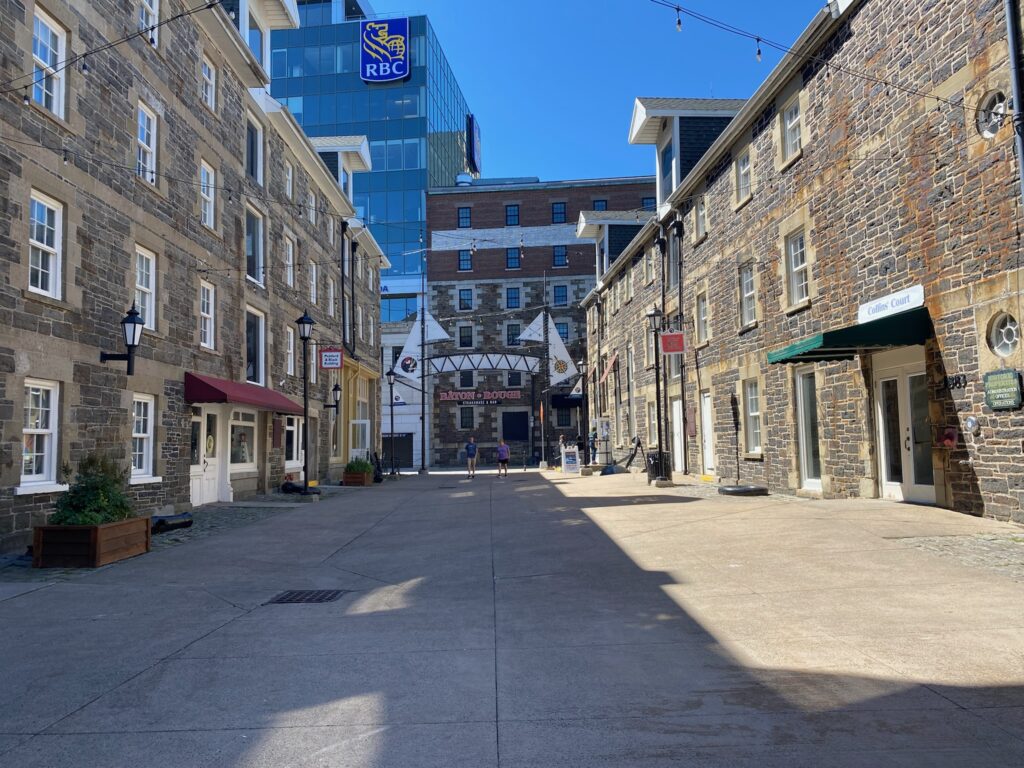
1917 survivors
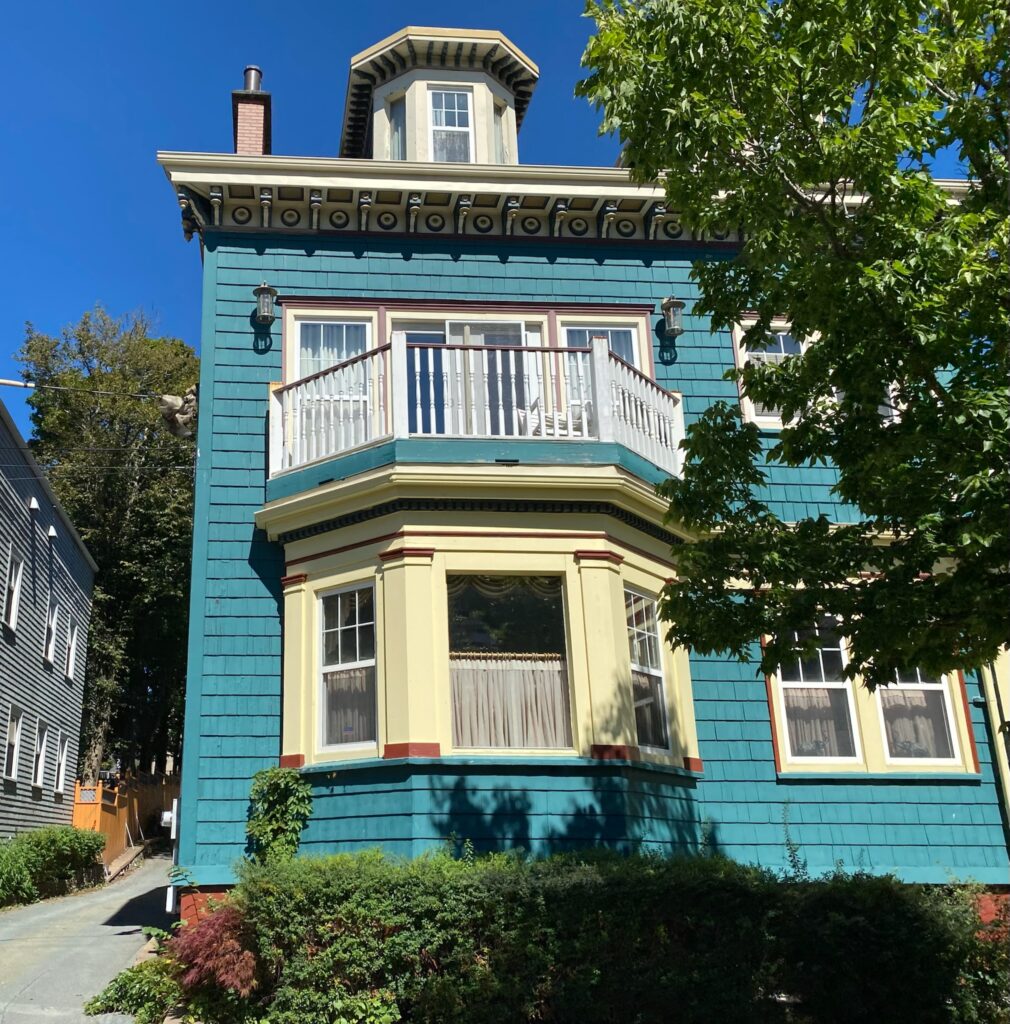

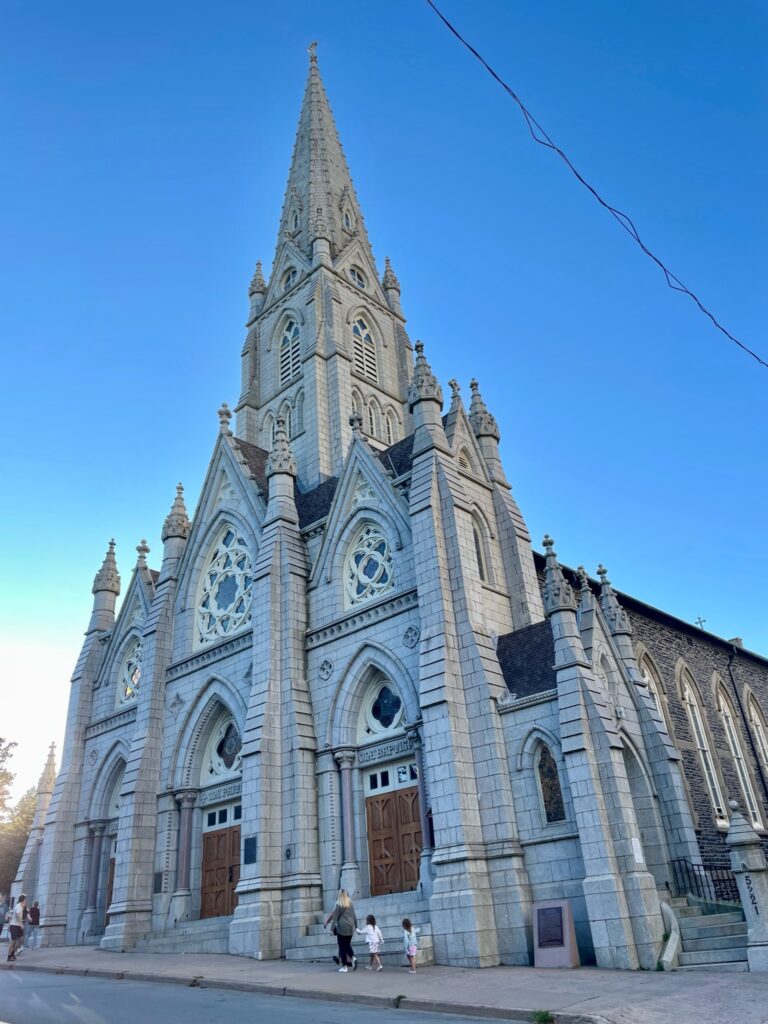
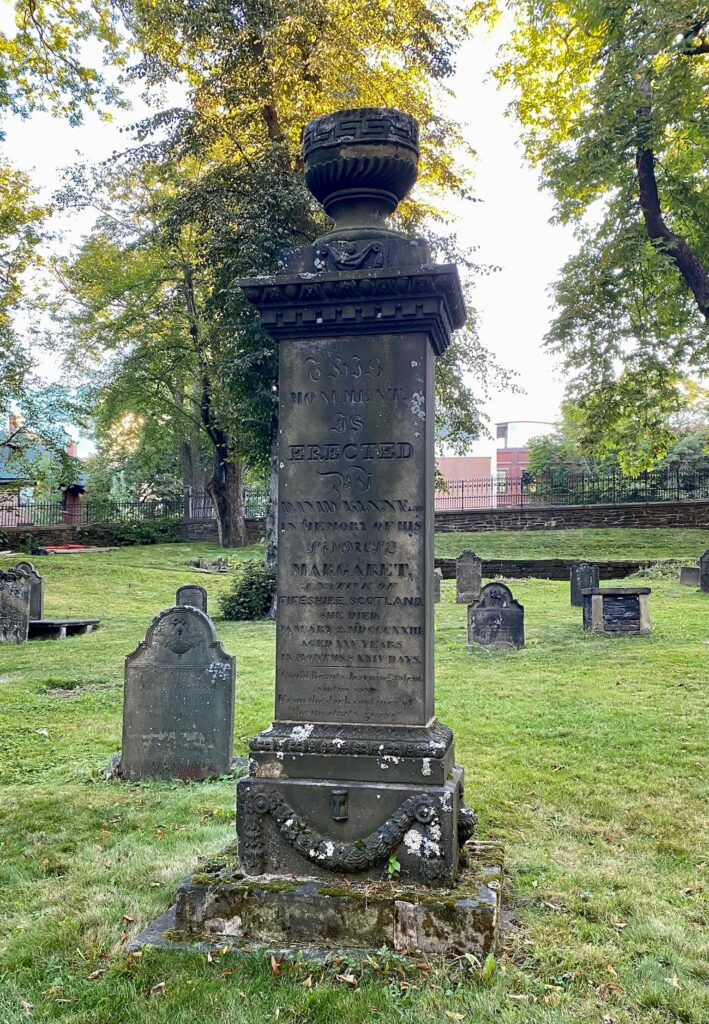
Old Burying Ground 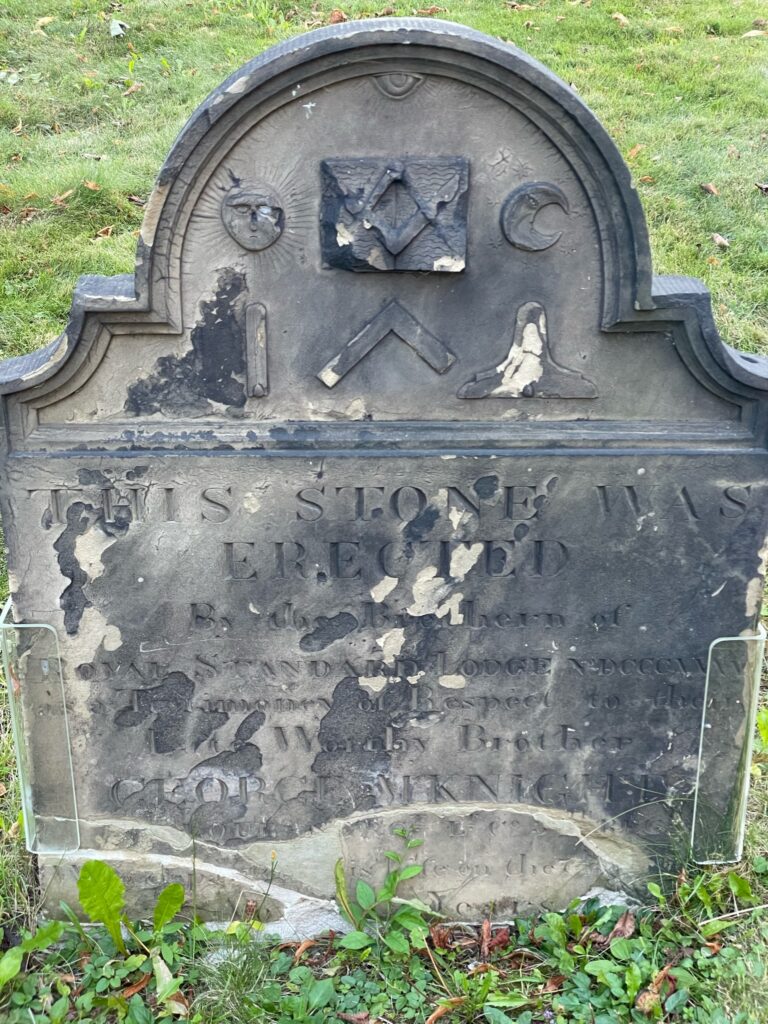
With just under 500,000 people, the “big town” of Halifax has a small-town feel. It’s RV-friendly, easy to walk around, has good food, a hip vibe against the backdrop of so much history, and plenty of entertainment for at least 2-3 days. So what are you waiting for? Get after it!

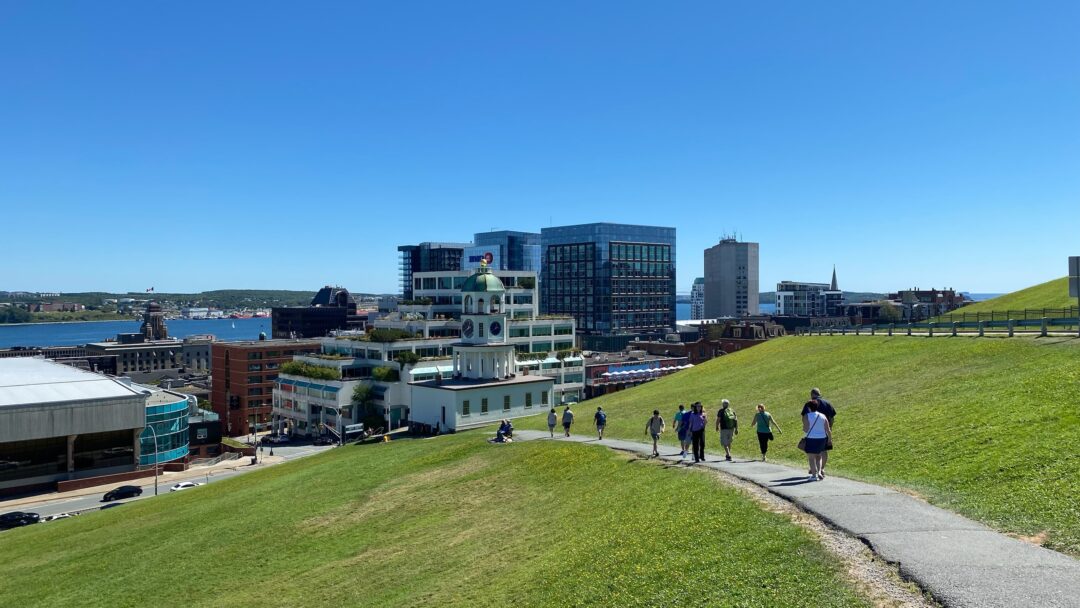


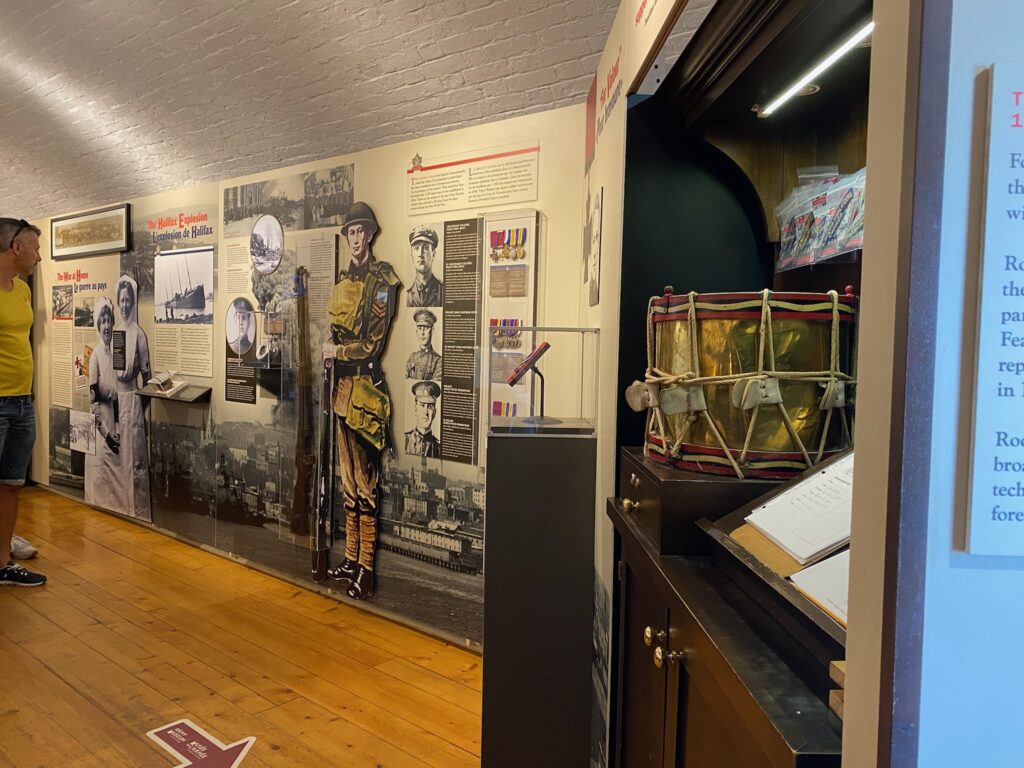
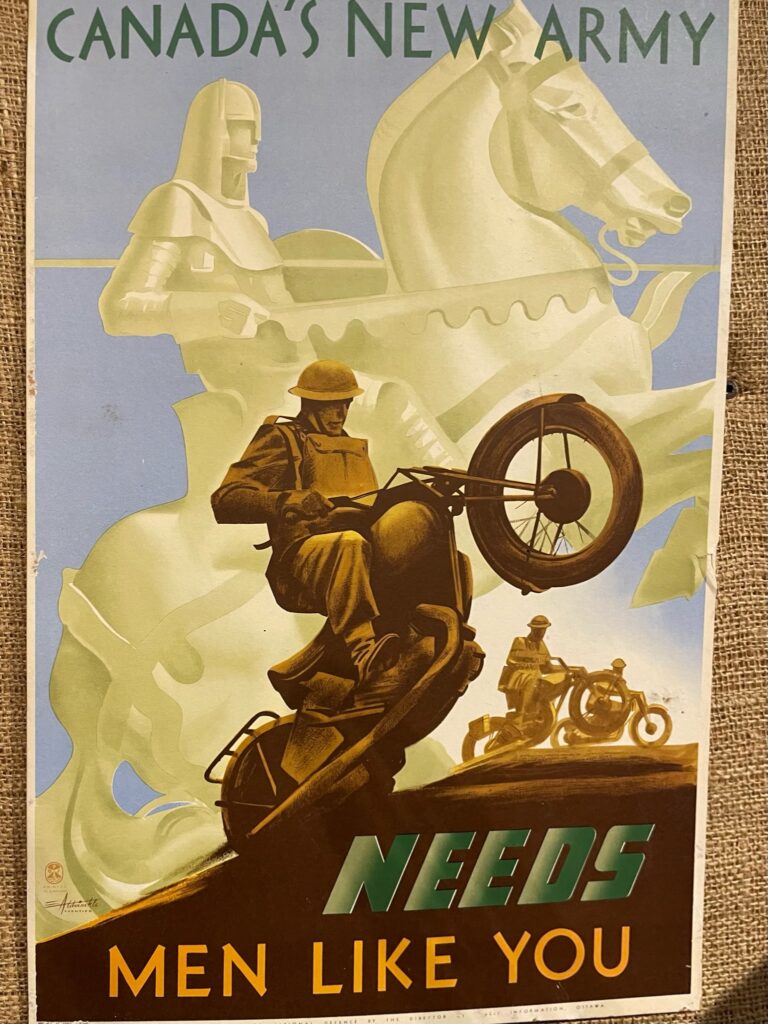

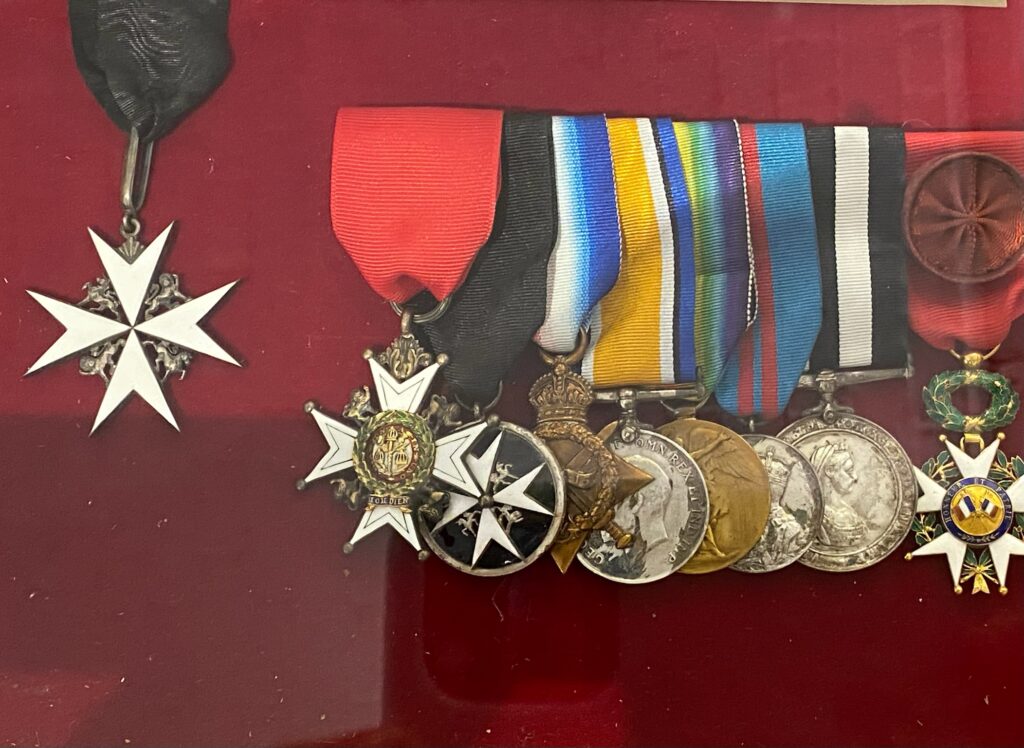
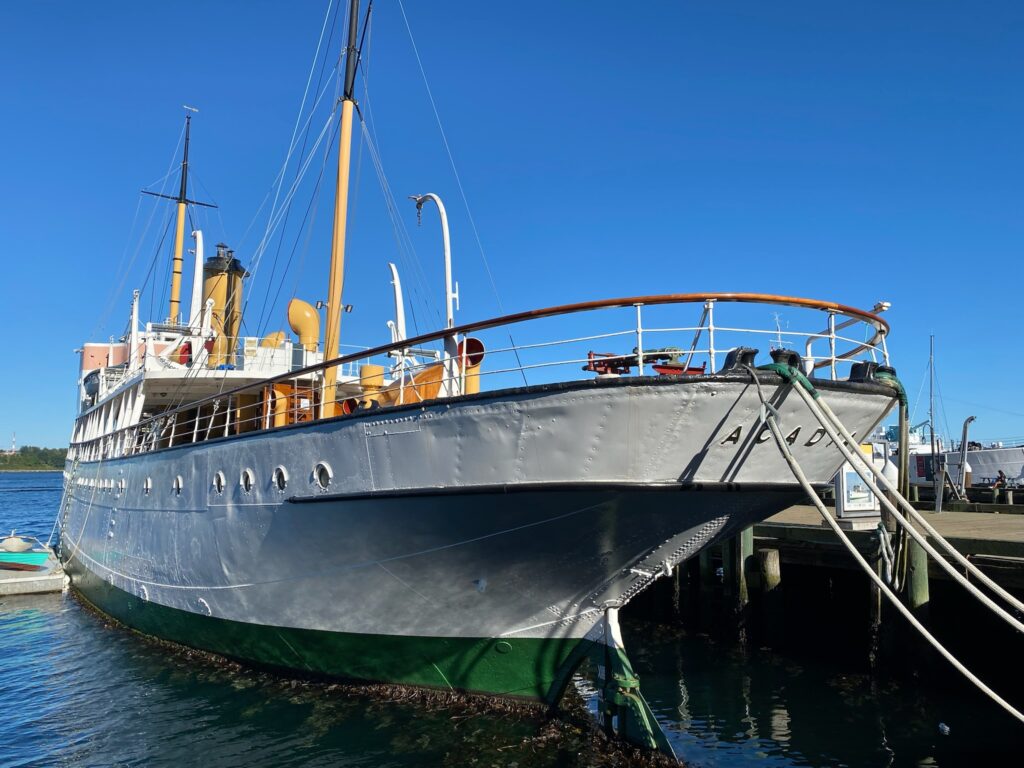

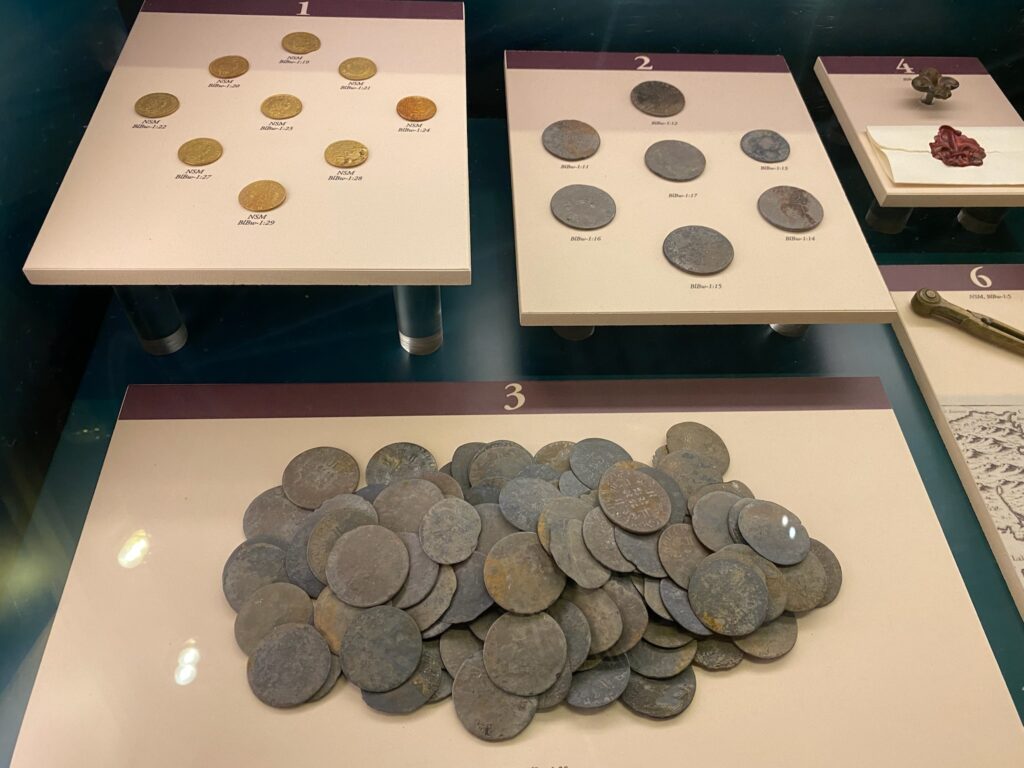
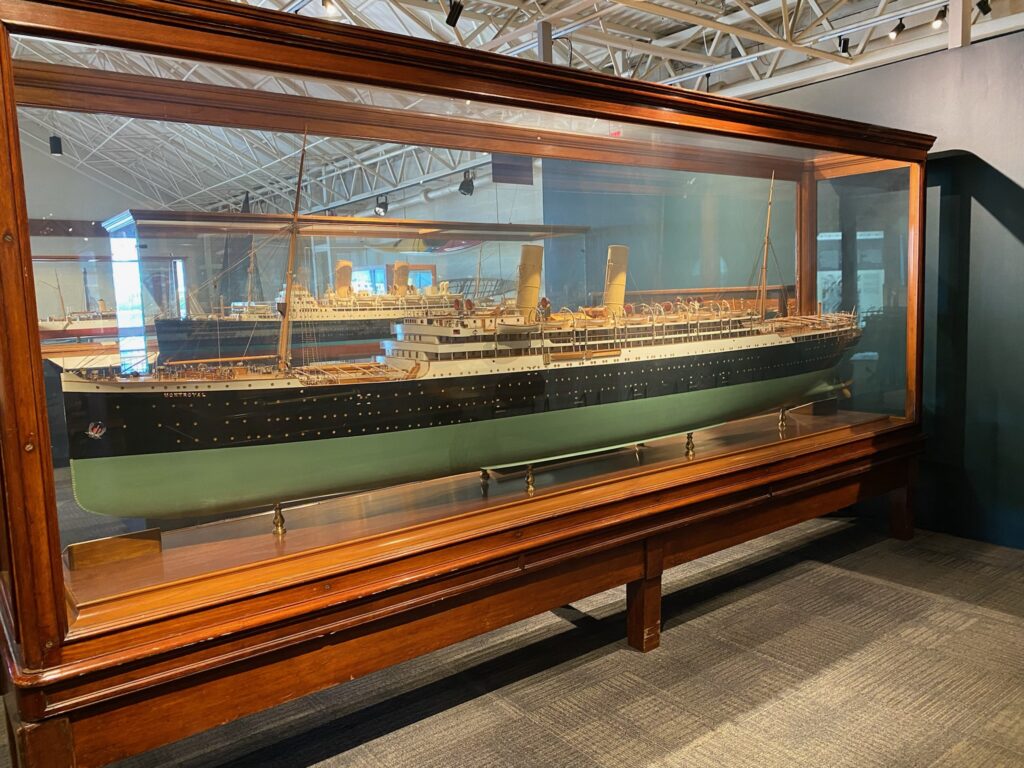
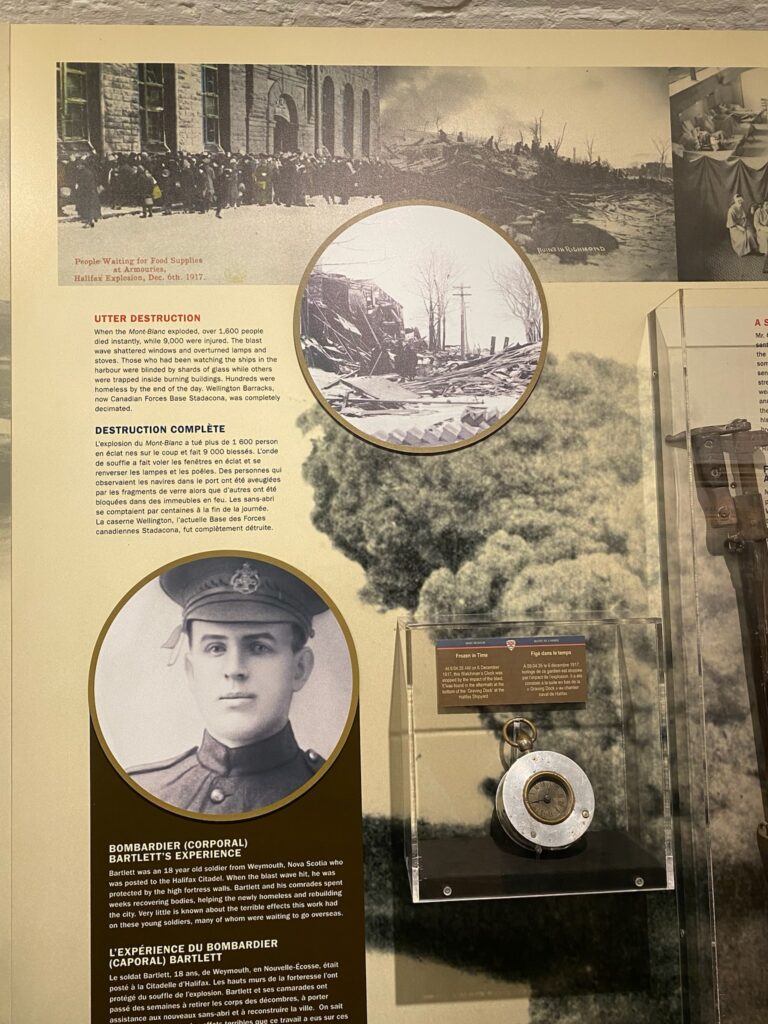
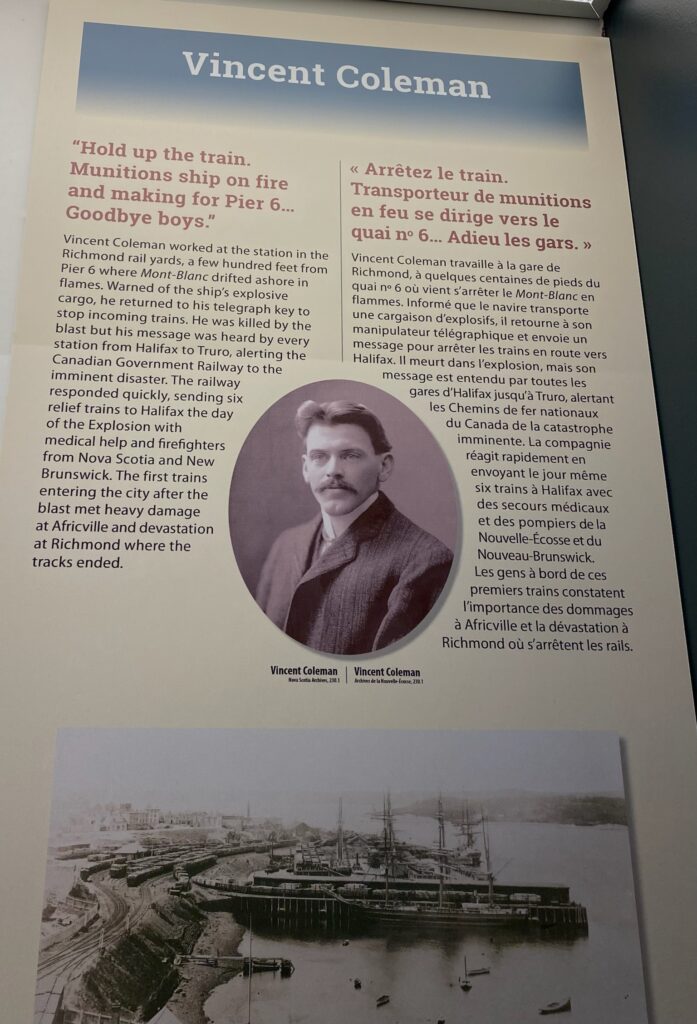

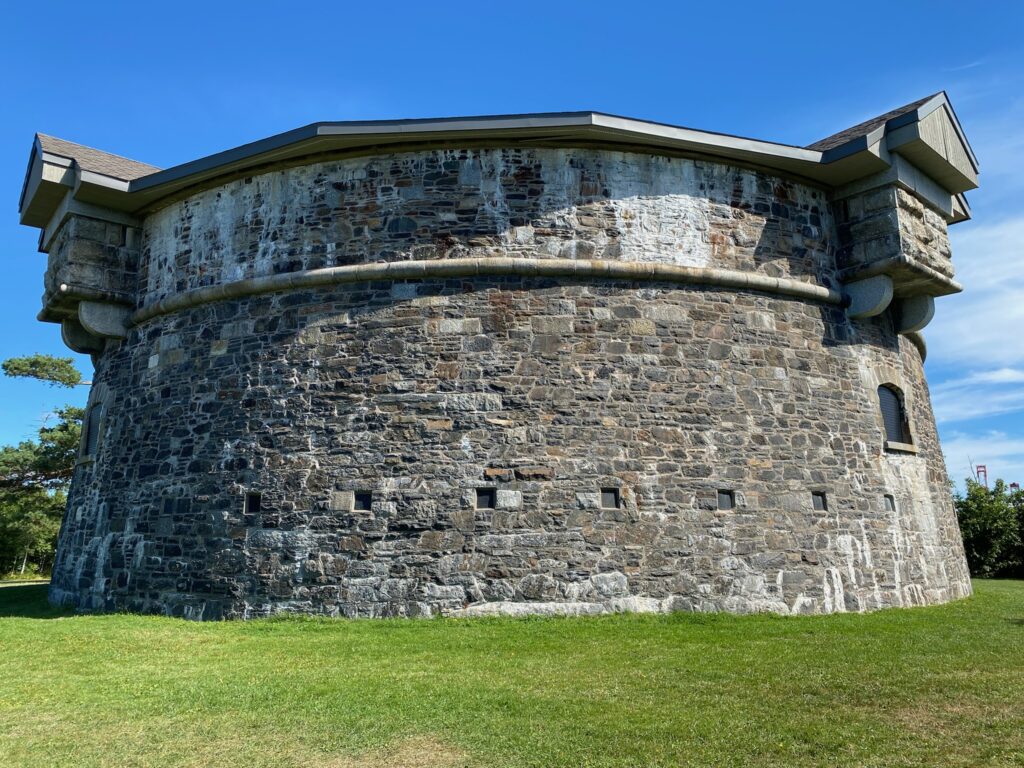
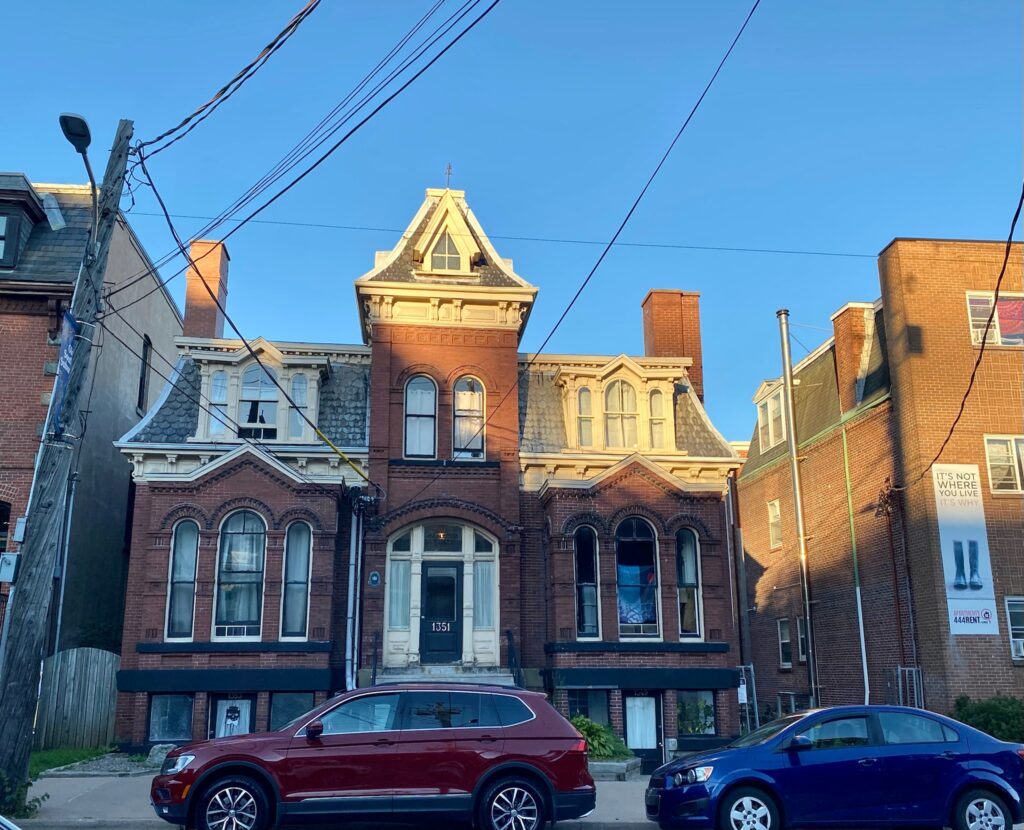


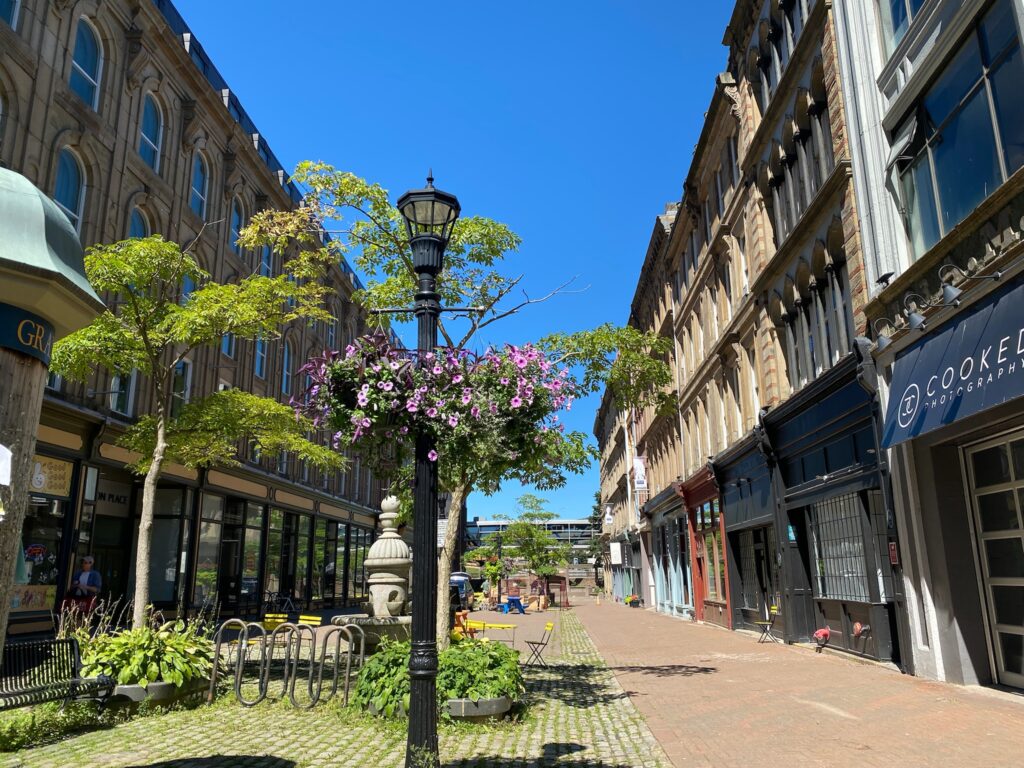



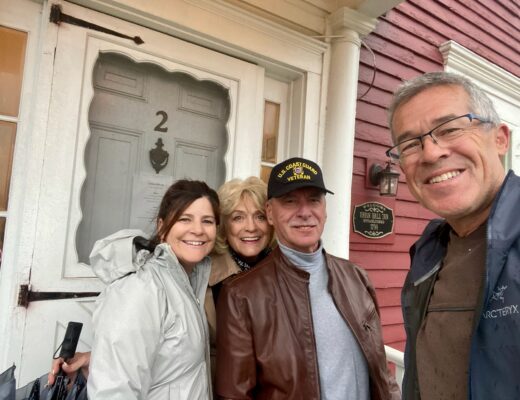








 Did you know that the oldest and largest aviati
Did you know that the oldest and largest aviati








 #camphairdontcar
#camphairdontcar


